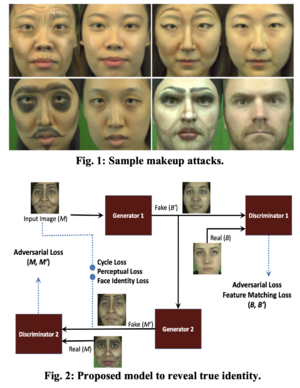Multimedia Forensics
Recent advances in machine learning have made it easier to create fake images and videos. Users and computing systems are facing increasing difficulties in differentiating forged contents from original ones. In this project, we focus on various aspects of detecting fake content, including detecting makeup attacks in biometrics systems to identifying forged videos and images.
People
- Mohammad Amin Arab
- Ali Ghorbanpour
- Puria Azadi (graduated)
- Mohamed Hefeeda
Revealing True Identity: Detecting Makeup Attacks in Face-based Biometric Systems
| Face-based authentication systems are among the most used biometric systems, because of the ease of capturing face images in a non-intrusive way. These systems are, however, susceptible to various attacks, including printed faces, artificial masks, and makeup attacks. Makeup attacks are the hardest to detect in biometric systems because makeup can substantially alter the facial features of a person, including making them appear older/younger, modifying the shape of their eyebrows/beard/mustache, and changing the color of their lips and cheeks (Fig. 1). Makeup can even trick human agents trying to identify a person standing before them.
|
We collected a unique dataset of what we call malicious makeup, which is makeup purposely applied to deceive security systems, especially unattended ones where there are no humans to question the potentially weird looks of the makeup. Using extensive objective and subjective studies, we showed that our solution produces high detection accuracy and substantially outperforms the state-of-the-art.
This work was supported by IARPA through a sub-contract from the University of Southern California (USC), and it was done in collaboration with Dr. Wael Abd-Almageed and Dr. Mohamed Hussein of ISI at USC.
Code and Datasets
https://github.com/maarab-sfu/revealing-true-identity
Publications
- M. Arab, P. Azadi Moghadam, M. Hussein, W. Abd-Almageed, and M. Hefeeda. Revealing True Identity: Detecting Makeup Attacks in Face-based Biometric Systems, In Proc. of ACM Multimedia Conference (MM'20), Seattle, WA, October 2020.

